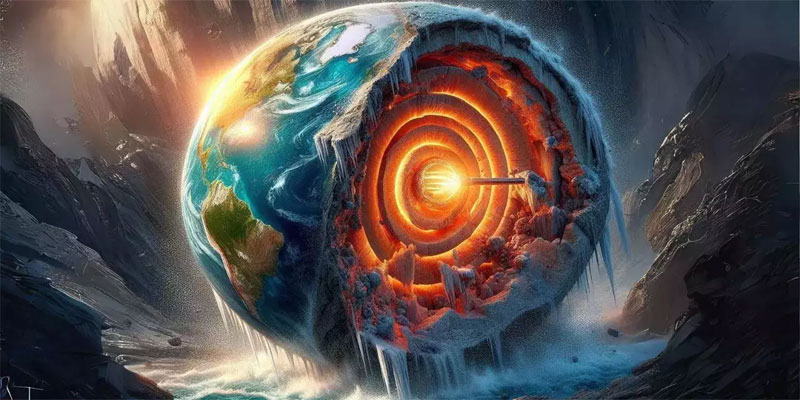In recent times, numerous remarkable scientific discoveries have garnered global attention. Among these revelations is the recent buzz on social media regarding a colossal ocean hidden beneath the Earth’s crust. This subterranean water reservoir, located approximately 700 kilometers below the Earth’s surface within a rock known as ringwoodite, boasts a volume three times that of all the planet’s surface oceans combined.

The detailed findings of this discovery were presented in a 2014 scientific paper titled ‘Dehydration melting at the top of the lower mantle’, which also shed light on the unique properties of ringwoodite. Geophysicist Steve Jacobsen, a prominent member of the discovery team, described ringwoodite as similar to a sponge, capable of absorbing water due to its special crystal structure.
Jacobsen remarked, “I think we are finally seeing evidence for a whole-Earth water cycle, which may help explain the vast amount of liquid water on the surface of our habitable planet. Scientists have been looking for this missing deep water for decades.”
This groundbreaking revelation originated from researchers’ study of earthquakes, during which they observed seismic shockwaves beneath the Earth’s surface using seismometers.
Expanding on their discoveries, the scientists explained, “The significant water storage capacity of minerals in Earth’s mantle transition zone (at depths of 410 to 660 kilometers) implies the existence of a deep H2O reservoir, which could lead to dehydration melting of vertically flowing mantle. We investigated the impacts of downward movement from the transition zone into the lower mantle through high-pressure laboratory experiments, numerical modeling, and seismic P-to-S conversions.
Read Also: Almost 75% Businessmen Have No Hopes of Improvement from New Govt: Gallup Survey
Furthermore, they uncovered intergranular melt in the transition zone, indicating hydration of a substantial portion of the transition zone and suggesting that dehydration melting may contribute to trapping water in this zone.
Armed with this groundbreaking revelation, researchers are now striving to collect additional seismic data globally to verify the prevalence of mantle melting. Their findings have the potential to revolutionize our understanding of Earth’s water cycle, providing new insights into one of the planet’s fundamental processes.